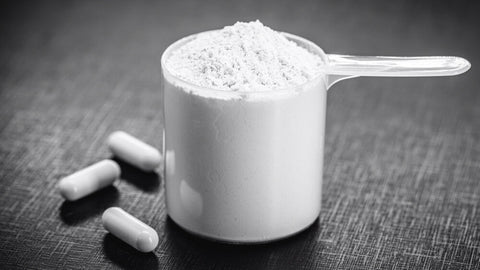Carbs are where things can get tricky, because unlike the other macros these vary consistently based on your goals. As referenced above, there are additional methods that can be added to basic macro-tracking, like carb cycling. For the most part, however, what will change the most when it comes to carbs is reducing them when fat loss has plateaued – but only gradually.
Should you avoid simple carbs at all costs?
As stated above, the goal is to eat as much as possible while still seeing progress, and this holds true for carb intake as much as proteins and fats. While simple carbs are ideal post-workout to enhance nutrient uptake, in general you want to stick to complex carbs like whole grains, oats, or brown rice.
This isn’t a hard and fast rule, mind you. Remember, it’s the combined macros of your meals that ultimately count. Adding protein and fats to your carbs helps reduce their impact. Still, for a number of reasons, it’s best to stick to complex carb sources versus simple sugars and fast-digesting carbs.
How many carbs should you fit into your diet?
As far as calculating your carb target, that depends in large part on your current intake and your goals. If Dr. Stoppani’s protein and fat recommendations already exceed your current caloric intake, you’ll want to at least aim for fewer grams of carbs per pound than you currently take in. On the other hand, if those recommendations leave room, simply match your caloric intake by filling in the rest with carbohydrates. We’ll dive deeper into macro tracking and individual macros more later.
What really makes carbs different from the other macros is their variability. Your protein and fat intake should remain the same, per your bodyweight, but with carbs they can and should change based on your progress – or lack thereof.
So, while you may find yourself aiming for as much as 2 grams per pound of bodyweight, you could just as easily wind up aiming for less. The important thing to remember is that, of all the macros, carbs are the ones you want the freedom to cut when necessary.
When should you cut carbs?
While the goal is to eat as much as possible while still seeing progress, when progress stops it’s your carb target that will change. It may be an increase if you’re looking to add muscle, or a decrease when fat loss stalls. Just like getting into a meal plan like this from your current diet, these will be gradual changes, as little as 0.25 grams per pound each week to two weeks.
In part, this approach will allow your body to adapt to the changes in a good way – giving it time to adjust to your new macro levels so as not to shock it – and in part it will also generally guide you in terms of pacing. You should never make massive changes to your diet, as a rule, because of the havoc it can wreak on the body and your metabolism.
Bottom line: Less is more when it comes to making adjustments to your macros, especially with carbs as they’re the macro you’ll adjust the most.



